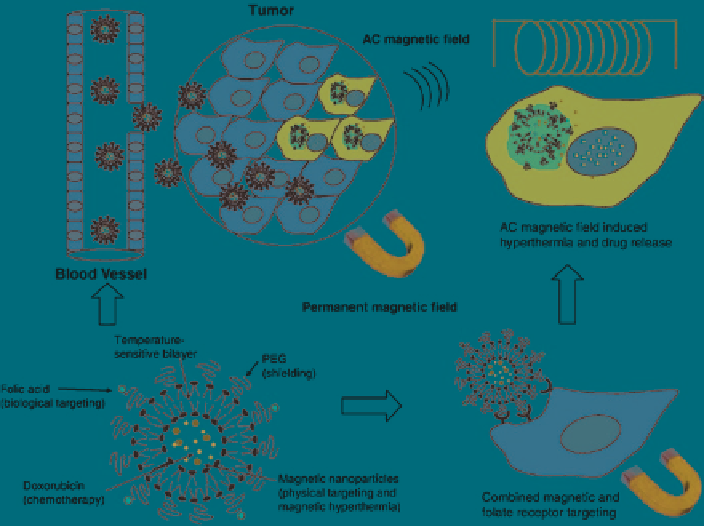Biomedical Engineering Reference
In-Depth Information
Here we will emphasize the vesicle structure changes induced by the magnetic field
for the purpose of controlled release.
Magnetic nanoparticles were firstly incorporated in liposomes (small molecular
vesicles) either in its aqueous compartment (Sabaté et al.
2008
; Zhang et al.
2005
)
or in its lipid bilayer via magnetized polymers (Kamaly et al.
2007
; Leclercq et al.
2003
). Such magnetic liposomes can be used to target therapeutic molecules to a
specific site when exposed to a magnetic field. Once the drug-loaded magnetic
liposomes reach the target, the drug can also be released by radio-frequency heat-
ing (hyperthermia) of SPIONs with a thermosensitive lipid bilayer. Temperature-
sensitive lipid bilayer frequently include dipalmitoylphosphatidylcholine (DPPC)
as the key component, since liposomes usually become leaky at a gel-to-liquid
crystalline phase transition that takes place at 41°C (Yatvin et al.
1978
; Jeong et al.
2009
). Pradhan et al. (
2010
) developed folate receptor targeted thermosensitive
magnetic liposomes (MagFolDox), which are designed to combine features of
biological and physical (magnetic) drug targeting for use in magnetic hyper-
thermia-triggered drug release (Fig.
21
). The optimized liposome formulation had
Fig. 21
The figure shows the concept of a multifunctional drug carrier responsive to magnetic
field. It is a folate-receptor-targeted and temperature-sensitive magnetic liposome containing
doxorubicin, which can be targeted physically by magnetic field and biologically by folic acid to
tumor cells. Drug release will be triggered by hyperthermia upon local application of an AC mag-
netic field on the tumor tissue. (Reproduced from Pradhan et al.
2010
)

Search WWH ::

Custom Search